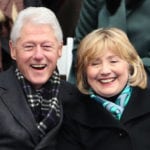 Politics
Politics  Politics
Politics  Weird Stuff
Weird Stuff Ten Bizarre Facts About The Doge Meme
 Our World
Our World 10 Ways Your Christmas Tree Is More Lit Than You Think
 Movies and TV
Movies and TV The 10 Coolest Stars to Set Sail on The Love Boat
 History
History 10 Things You Didn’t Know About the American National Anthem
 Technology
Technology Top 10 Everyday Tech Buzzwords That Hide a Darker Past
 Humans
Humans 10 Everyday Human Behaviors That Are Actually Survival Instincts
 Animals
Animals 10 Animals That Humiliated and Harmed Historical Leaders
 History
History 10 Most Influential Protests in Modern History
 Creepy
Creepy 10 More Representations of Death from Myth, Legend, and Folktale
 Politics
Politics 10 Political Scandals That Sent Crowds Into the Streets
 Weird Stuff
Weird Stuff Ten Bizarre Facts About The Doge Meme
 Our World
Our World 10 Ways Your Christmas Tree Is More Lit Than You Think
Who's Behind Listverse?

Jamie Frater
Head Editor
Jamie founded Listverse due to an insatiable desire to share fascinating, obscure, and bizarre facts. He has been a guest speaker on numerous national radio and television stations and is a five time published author.
More About Us Movies and TV
Movies and TV The 10 Coolest Stars to Set Sail on The Love Boat
 History
History 10 Things You Didn’t Know About the American National Anthem
 Technology
Technology Top 10 Everyday Tech Buzzwords That Hide a Darker Past
 Humans
Humans 10 Everyday Human Behaviors That Are Actually Survival Instincts
 Animals
Animals 10 Animals That Humiliated and Harmed Historical Leaders
 History
History 10 Most Influential Protests in Modern History
 Creepy
Creepy 10 More Representations of Death from Myth, Legend, and Folktale
10 Bizarre Motivations of Would-Be Presidential Assassins
John Hinckley Jr., the man who shot President Ronald Reagan, was famously obsessed with the film Taxi Driver, modeling himself after the troubled protagonist, Travis Bickle, in his wardrobe, gun hoarding, and penchant for peach brandy.
Ultimately, his attempt to assassinate the commander in chief was based on a desire to impress actress Jodie Foster. But Hinckley was only one man in a long line of failed presidential assassins with bizarre motives.
10 Richard Lawrence
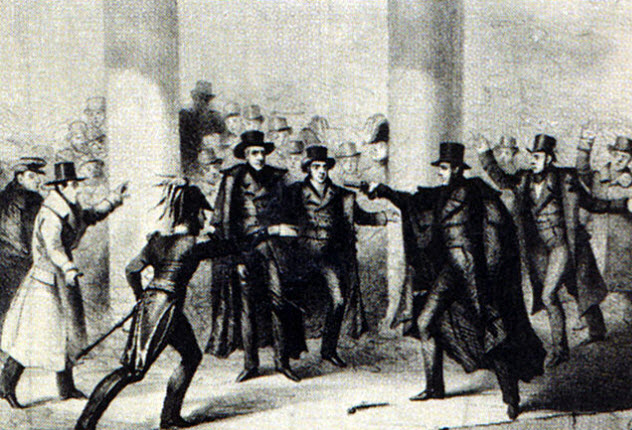
In 1835, unemployed housepainter Richard Lawrence attempted to kill Andrew Jackson by firing a pair of pistols at the president as he was leaving a funeral at the Capitol. Both guns misfired. Lawrence was wrestled to the ground by a group of men, including Congressman Davy Crockett, while Jackson reportedly beat his would-be killer several times with his cane.
Early suspicions that Lawrence was a patsy of a Whig conspiracy were short-lived. At his trial, Lawrence was found not guilty by reason of insanity by a jury that deliberated for less than five minutes. Then he was sent to an asylum where he remained until his death in 1861.
Lawrence apparently believed that he was King Richard III and appeared at court wearing a shooting jacket and cravat. At one point, Lawrence told the jurors, “It is for me, gentlemen, to pass [judgment] upon you, and not you upon me.”
Lawrence was convinced that Congress owed him a dispensation for his estates. He believed that Jackson’s opposition to the Second Bank of the United States was preventing him from receiving his due, which kept him from claiming his rightful throne as the king of England.
According to later testimony, Lawrence also believed that Jackson had killed his father in 1832. Lawrence’s father had actually died in England in 1823 and had never visited the US.
9 John Schrank

As Progressive candidate Theodore Roosevelt campaigned for a third term in 1912, he was shadowed by Bavarian John Flammang Schrank. Roosevelt was preparing to deliver a stump speech in Milwaukee when Schrank shot the president with a .38 Colt revolver at short range.
The bullet passed through a folded copy of his address, the case for his glasses, and a heavy wool coat. Schrank was quickly arrested, and Roosevelt continued to speak for four hours before going to the hospital.
Schrank’s stated motivation for his act was to prevent Roosevelt from seeking a third term. Schrank also resented Roosevelt’s Rough Rider “masquerade” during the Spanish-American War. Finally, Schrank was angry about Roosevelt’s enforcement of blue laws, which required bars to close on Sundays and had cut into Schrank’s income as a saloon owner in New York City.
According to a letter found on Schrank’s person, he had even stranger motivations:
In a dream I saw president McKinley sit up in his coffin, pointing at a man in a monk’s attire in whom I recognized Ther [sic] Roosevelt. The dead president said This is my murderer avenge my death. To prevent is better than to defend. Never let a third term party emblem appear on an official ballot. I am willing to die for my country, god has called me to be his instrument. So help me god. From (unintelligible) Living it infers (?) gott. Innocent Guilty.
When Schrank discovered that the doctors were not going to remove the bullet from the president’s chest, he was furious. “That is my bullet,” Schrank said. “In after years when I am regarded as a hero, the bullet will be valuable and I want it to go to the New York Historical Society. I want the gun to go with it also and I am putting that in my will.”
Though Schrank was declared insane by physicians and sent to an asylum in 1914, some were unconvinced, including the president. Roosevelt wrote to a friend that Schrank was not insane but merely “a man of the same disordered brain which most criminals, and a great many noncriminals, have.”
He noted that Schrank “had quite enough sense to avoid shooting me in any Southern State, where he would have been lynched, and he waited until he got into a State where there was no death penalty.”
8 Giuseppe Zangara
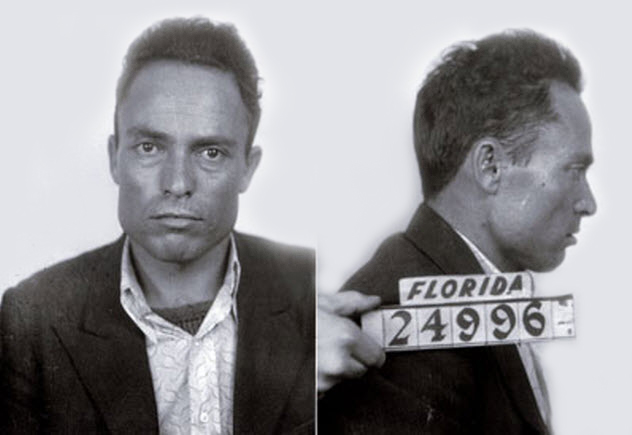
As President-Elect Franklin D. Roosevelt was visiting Miami in 1933, Italian immigrant Giuseppe Zangara stood on a metal chair and fired six shots at Roosevelt and his entourage with a cheap pistol purchased from a local pawn shop.
A nearby woman named Lillian Cross grabbed Zangara’s arm, which likely saved the president. But five others were hit, including Chicago mayor Anton Cermak.
Zangara had a mistrust of authority figures, probably linked to his mistreatment by officers while serving in the Italian army. Upon immigrating to the US, his hatred was transferred from those officers and the king of Italy to the American president as head of state. Zangara also wanted to transfer his sharp abdominal pains and chronic flatulence, likely caused by gallbladder adhesions, to the president-elect.
Zangara initially plotted to kill President Herbert Hoover, but Roosevelt was elected before he could act. “I want to kill president because I no like capitalists,” he explained. “I have gun in my hand, I kill kings and presidents first and next all capitalists. Hoover and Roosevelt—everybody the same.”
Mayor Cermak recovered from the gunshot wound but died of complications. When told of Cermak’s death and asked whether he felt sorry for what he had done, Zangara replied, “Not my fault. Woman move my hand. [ . . . ] I sorry, like when die bird, or horse, or cow, I sorry.”
Despite conspiracy theories that Zangara was working for the Mafia and that Cermak was the real target all along, the police at the time and most historians have found no evidence of an overarching plot.
Zangara was executed a month after the assassination attempt but had some ripe words for the judge present at his execution:
You give me electric chair. I no afraid of that chair! You one of capitalists. You is crook man, too. Put me in electric chair. I no care! Get to hell out of here, you son of a bitch! (directed at attending minister) I go sit down all by myself. Viva Italia! Goodbye to all poor peoples everywhere! Lousy capitalists! No picture! Capitalists! No one here to take my picture. All capitalists lousy bunch of crooks. Go ahead. Pusha da button!
7 Arthur Bremer
Growing up in an abusive home, Arthur Bremer was an unhappy loner in school. As he got older, his problems intensified. When patrons complained that he talked to himself, he was demoted from busboy to kitchen hand at his job at the Milwaukee Athletic Club.
Bremer soon began to practice as a marksman. During his early attempts, he missed his target and shot holes in the ceiling instead. Then he was arrested when police found him asleep in his car, with bullets on the front seat, as he was parked outside a local synagogue.
Things got even worse after a brief relationship with 15-year-old Joan Pemrich in late 1971. Pemrich broke up with the 21-year-old Bremer after three dates due to his “goofy and weird” behavior. Afterward, Bremer shaved his head to “to show her that inside I felt as empty as my shaved head.”
The following March, Bremer began to write in a journal: “Now I start my diary of my personal plot to kill by pistol either Richard Nixon or George Wallace.”
Although Nixon was controversial and Wallace was a segregationist, Bremer’s dreams to kill one of the 1972 presidential candidates wasn’t based on politics but rather a desire “to do something bold and dramatic, forceful and dynamic, a statement of my manhood for the world to see.”
He preferred to think of himself as an “assassinator,” because “Assissns [sic] is so ordinary.” While still planning to target Nixon, Bremer mused about developing a cute catchphrase to shout during the assassination “like Booth did.”
Initially, Bremer planned to drive to Ottawa, Wisconsin, where Nixon was visiting, and lose his virginity to a prostitute before committing the assassination.
But Bremer nearly shot himself when his gun discharged in his hotel room. He also irretrievably wedged one of his guns in the trunk of his car. When security was too tight to get close to Nixon, Bremer blamed the attention-stealing protesters.
Then he attempted to kill George Wallace instead. Although Wallace didn’t die, Bremer paralyzed the candidate and ended his presidential aspirations. Bremer was wrestled to the ground and sentenced to 53 years in federal prison.
He never managed to shout his planned catchphrase: “A penny for your thoughts!” In 1998, Bremer wrote to parole officers to argue for his freedom by saying that shooting “segregationist dinosaurs” wasn’t as serious as shooting mainstream politicians.
6 Samuel Byck
In February 1974, Samuel Byck drove to Baltimore/Washington International Airport, shot Officer George Neal Ramsburg of the Maryland Aviation Administration Police, and boarded nearby Delta Air Lines Flight 523 to Atlanta in the hopes of crashing the plane into the White House and killing President Nixon.
After being told that the plane wouldn’t fly without the wheel blocks being removed, Byck shot the pilot and copilot, told a passenger to fly the plane, and ordered a stewardess to close the doors or he would blow up the plane. Officer Charles Troyer stormed the plane and fired through the cockpit door, killing Byck.
Astonishingly, the Secret Service knew about Byck but had written him off as a harmless kook. While undergoing treatment for depression, Byck had decided that the government was conspiring to hurt the poor. He developed a deep resentment toward President Nixon after being turned down for a business loan by the Small Business Administration.
Bremer was also arrested twice for protesting without a permit outside the White House. The second time, he was dressed as Santa Claus and carried a sign that read: “All I want for Christmas is my constitutional right to publicly petition my government for a redress of grievances.”
He began to threaten the president through disjointed tape recordings sent to public figures, including scientist Dr. Jonas Salk, Connecticut Senator Abraham Ribicoff, baseball player Hank Aaron, pediatrician Dr. Benjamin Spock, reporter Jack Anderson, and composer Leonard Bernstein.
The tapes openly declared his plan, which he linked to Watergate: “This government does not have the ability to cleanse itself, and I will cleanse it by fire.” The Secret Service paid little heed, so Byck began to plan his “Operation Pandora’s Box.”
Byck may have been the first person to attempt to hijack a plane with the intention of flying it into a building as a terrorist attack. It is unclear where he got the idea, although there were several theories. In any case, the event was played down in the media in the hopes of preventing copycat attempts.
5 Lynette Fromme And Sara Jane Moore
In September 1975, President Gerald Ford was touring Capitol Park in Sacramento, California, when he was approached by a woman in a long flowing robe who pointed a .45 Colt pistol in his direction.
Secret Service Agent Larry Buendorf grabbed the weapon and jammed the hammer with the webbing of his thumb. Although the gun had four cartridges in the magazine, police later realized that the chamber itself was empty.
The woman was Lynette “Squeaky” Fromme, a follower of convicted madman Charles Manson. She claimed at her arraignment that she had only wished to talk to President Ford about California’s endangered redwood trees. She said, “I was so relieved not to have to shoot it, but, in truth, I came to get life. Not just my life but clean air, healthy water, and respect for creatures and creation.”
During her trial, she was ejected from the courtroom for threatening the judge. While being removed, she exclaimed that logging redwoods was like “cutting down your arms and legs.”
Later that month, there was another attempted assassination of Ford while he was visiting San Francisco. This time, the culprit was Sara Jane Moore, a mother of five who worked at People in Need. The organization had been set up by Randolph Hearst to appease the Symbionese Liberation Army who had kidnapped his daughter.
Moore was a member of various radical leftist groups and an informant for the FBI. She used her chameleonlike charm to funnel information from each side to the other.
Most people believed that Moore had attempted to kill President Ford to show her allegiance to the leftist groups, and she has claimed that the idea was broadly popular in San Francisco at the time.
Released from prison in 2007, Moore said in an interview with the Today show: “This is going to sound a little strange, but I really thought that it would trigger a new revolution. We were saying the country needed to change, the only way it was going to change was a violent revolution. I genuinely thought that this might trigger that new revolution in this country.”
4 Hinckley Copycats
After the assassination attempt on Ronald Reagan by John Hinckley Jr., there was a sharp upsurge in threats against the president by people who wished to finish the job. While many were motivated by mental instability and political motives, some copycats also shared Hinckley’s desire to impress an unrequited love interest in the media.
One farmer was arrested for telling television personality Jessica Savitch that he would shoot Ronald Reagan to win her love. Meanwhile, a pair of high school students got in hot water with the Secret Service when they sent a series of letters to actress Brooke Shields, who was then a student at Princeton.
One letter read: “Dear Brooke Shields, I love you, if you don’t make love to me I will kill President Reagan in one week if you don’t meet me at David’s Cookie Shop.”
Another would-be assassin shared Hinckley’s specific obsession with Taxi Driver and Jodie Foster. He sent Foster a letter that said:
I will finish what Hinckley started. Ronald Reagan must die. [Hinckley] has told me so in a prophetic dream. Sadly, though, your death is also required. You will suffer the same fate as Reagan and others in the fascist regime. You cannot escape. We are a wave of assassins throughout the country.
3 Francisco Duran
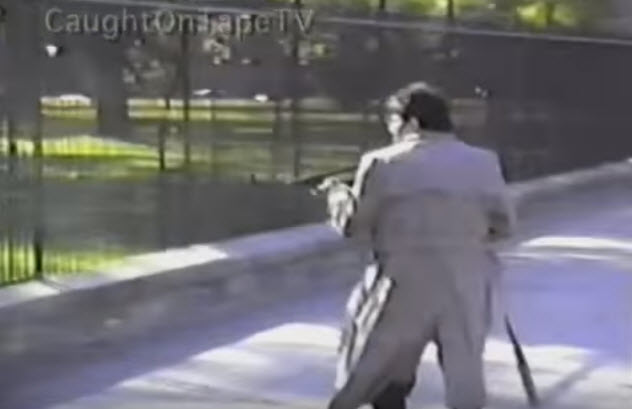
In October 1994, Francisco Martin Duran fired 29 rounds with a semiautomatic rifle at the White House from a fence overlooking the North Lawn. Initially, he concentrated his fire on a group of tourists in suits, including one who had a haircut similar to Clinton’s.
At the time, the president was watching a football game in the living quarters. There were no injuries, and Duran was wrestled to the ground by passersby before the Secret Service reached the scene.
Duran had a particularly bizarre defense, claiming to have received a vision from a multicolored alien. Supposedly, Duran was trying to destroy a malevolent alien mist that had been hanging over the White House for millennia.
The defense argued that Duran was suffering from paranoid schizophrenia. They brought in three therapists who concurred and said that Duran believed that he was saving the world.
The prosecution also brought in therapists. They saw inconsistencies in Duran’s story about the supposed alien mist and claimed that Duran merely had character flaws which made him crave attention and disregard the rights of others.
Prosecutors argued that Duran was faking insanity. According to this theory, Duran’s real motivation was his bitterness toward the government for sentencing him to over two years at Fort Leavenworth for drunk driving and running down a woman while serving as an army medic in Hawaii.
In the Clinton case, the jury ultimately convicted Duran. He was sentenced to 40 years in prison.
2 Ron Barbour
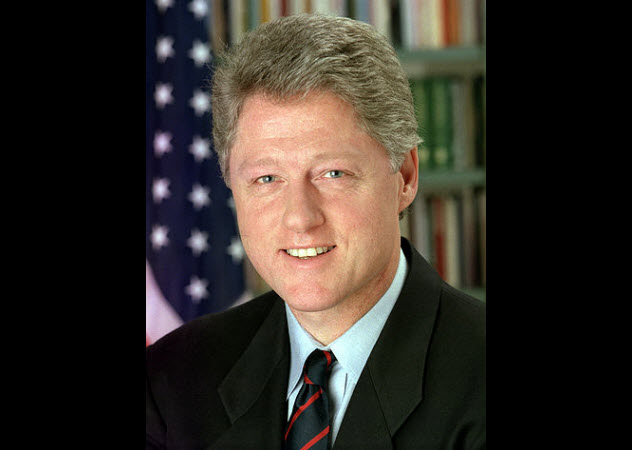
In 1994, unemployed limousine driver Ronald Gene Barbour was suffering from severe depression and made a failed suicide attempt at his Florida home. He subsequently drove to West Virginia to make another attempt there but missed his exit.
So Barbour decided to keep driving to Washington, DC, and kill President Clinton instead. He checked into a motel in Alexandria, Virginia, and spent the next seven days making daily visits to the Washington Mall, where he hoped to shoot the president as he was jogging. It was only when he discovered that President Clinton was in Russia that he returned to Florida.
Barbour told several neighbors about his failed assassination attempt, which ultimately came to the attention of the Secret Service. One neighbor even reported that Barbour boasted of having a vision of stomping Hillary Clinton to death with hobnail boots.
Neighbor Stacy Harris secretly recorded Barbour using a hidden microcassette recorder. The tape was played at Barbour’s trial despite defense objections that the recordings were illegal under state law.
Barbour later denied that he had ever attempted to kill President Clinton: “I don’t harbor that kind of feeling for anybody. Actually, I’m a harmless little fuzzball. I’m against assassination and changing things that way. I cried all weekend when Kennedy was assassinated.”
In 2016, Barbour was a member of the Tea Party and claimed to have been “an American political prisoner in the Federal Gulag for over four years in the 1990s, the victim of a US Secret Service run amok.”
1 Oscar Ortega-Hernandez
In 2011, Idaho resident Oscar Ortega-Hernandez drove through Washington, DC, in a black Honda Accord and fired nine rounds at the White House with a semiautomatic rifle. One bullet broke a window in the living quarters.
Both President Obama and the First Lady were out of town at the time, and Ortega-Hernandez was later arrested at a Pennsylvania hotel after he was recognized by a desk clerk.
Prior to the incident, family members had noticed a bizarre degeneration in Ortega-Hernandez’s behavior, which may have been related to schizophrenia induced by excessive marijuana use. At his 21st birthday party, he read a rambling 45-minute speech that decried the threat of secret societies and American foreign policy toward oil-producing nations.
Weeks before the shooting, Ortega-Hernandez had uploaded a video online as a plea to Oprah Winfrey to let him appear on her show. In the video, he said, “It’s not just a coincidence that I look like Jesus. I am the modern-day Jesus Christ that you all have been waiting for.”
He further believed that President Obama was the Antichrist and that he had received a message through time from the prophet Nostradamus. One acquaintance reported that Ortega-Hernandez feared that Obama planned to implant tracking chips into children.
Jack Chapman, the friend who had sold Ortega-Hernandez the firearm used in the incident, suggested that his conspiratorial motivations may have been inspired by the film The Obama Deception. As for his Jesus persona, it likely began as part of an intimidating look that Ortega-Hernandez adopted for mixed martial arts competitions.
David Tormsen couldn’t find out what motivated the pretzel. Email him at [email protected].
